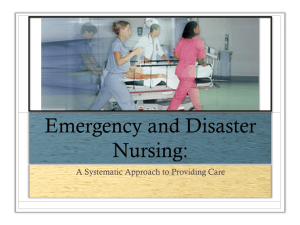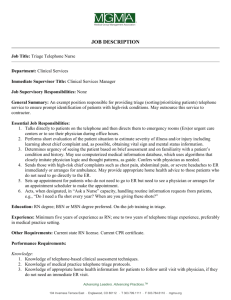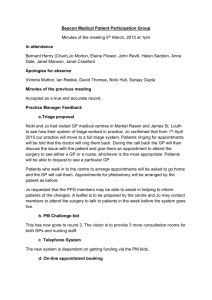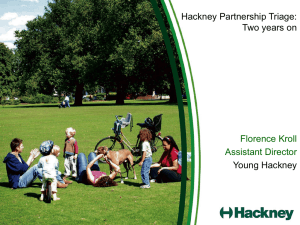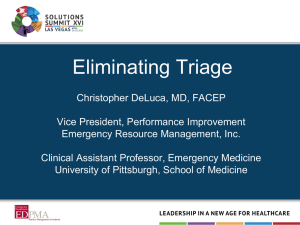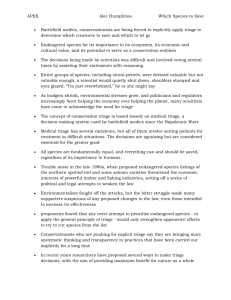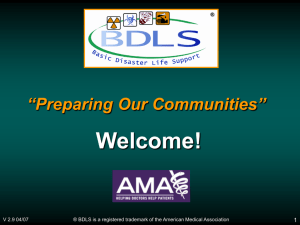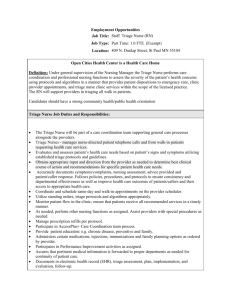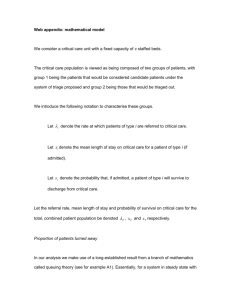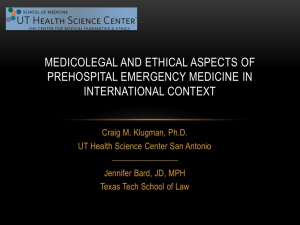Written Test Question & Answers
advertisement
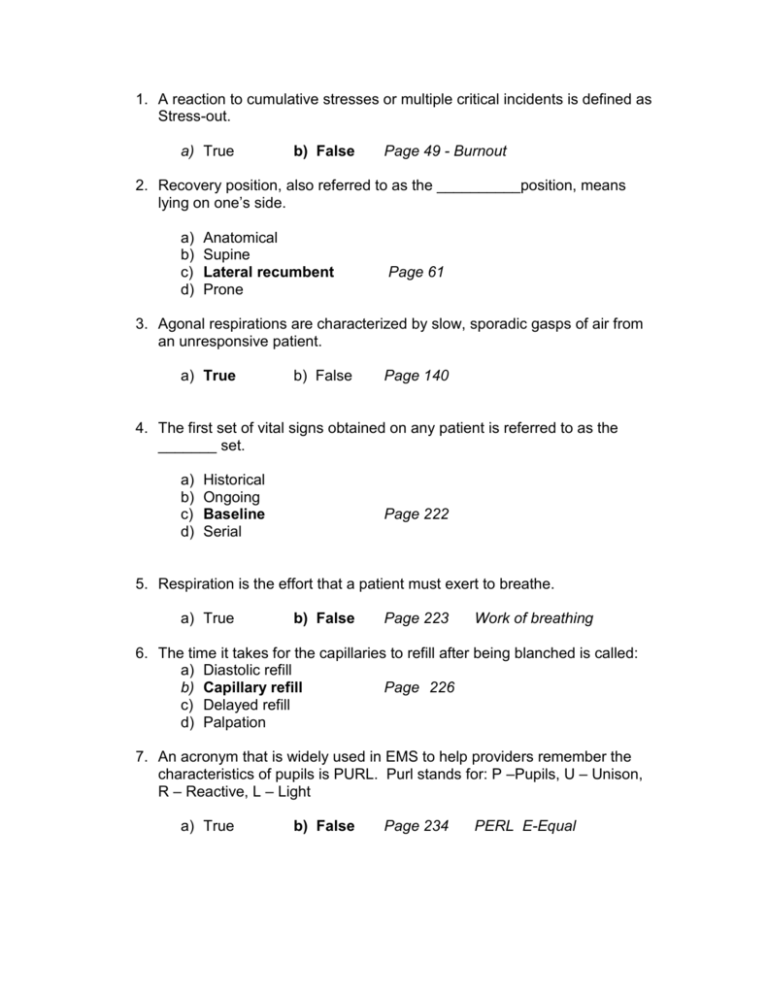
1. A reaction to cumulative stresses or multiple critical incidents is defined as Stress-out. a) True b) False Page 49 - Burnout 2. Recovery position, also referred to as the __________position, means lying on one’s side. a) b) c) d) Anatomical Supine Lateral recumbent Prone Page 61 3. Agonal respirations are characterized by slow, sporadic gasps of air from an unresponsive patient. a) True b) False Page 140 4. The first set of vital signs obtained on any patient is referred to as the _______ set. a) b) c) d) Historical Ongoing Baseline Serial Page 222 5. Respiration is the effort that a patient must exert to breathe. a) True b) False Page 223 Work of breathing 6. The time it takes for the capillaries to refill after being blanched is called: a) Diastolic refill b) Capillary refill Page 226 c) Delayed refill d) Palpation 7. An acronym that is widely used in EMS to help providers remember the characteristics of pupils is PURL. Purl stands for: P –Pupils, U – Unison, R – Reactive, L – Light a) True b) False Page 234 PERL E-Equal 8. When accessing a trauma patient with NO significant mechanism of injury, perform a focused secondary assessment, followed by: a) b) c) d) Rapid physical exam SAMPLE history Rapid trauma assessment Vital signs Page 268 9. The dorsalis pedis pulse is located on top of the foot just lateral to the large tendon of the big toe. a) True b) False Page 268 10. The myocardium receives its blood supply from: a) b) c) d) Coronary arteries Myocardial arteries The conduction pathway The aorta Page 278 11. Hypoxia is a general term referring to the inability of a person to breathe adequately. a) True b) False Page 291 Respiratory compromise 12. Normal depth (the size of each breath), is also described as ______. a) Normal rate b) Work of breathing c) Tidal volume Page 293 d) Tidal wave 13. Accessory muscles – muscles of the neck, chest, and abdomen that can assist during respiratory difficulty. a) True b) False Page 293 14. A variety of respiratory conditions can be classified as chronic obstructive pulmonary disease (COPD). Such conditions include: a) Asthma b) Chronic bronchitis c) Emphysema d) All of the above Page 294 15. Cerebral Thrombosis - an aneurysm or other weakened area of an artery ruptures. a) True b) False Page 312 Cerebral Hemorrhage 16. Hypoglycemia is also known as: a) b) c) d) High blood pressure Low blood pressure High blood sugar Low blood sugar Page 316 17. Generalized infections (Sepsis) are infections that are located in one particular area of the body. a) True b) False Page 324 throughout body 18. Wounds such as skinned elbows and knees are miner open wounds known as: a) Avulsions b) Lacerations c) Abrasions Page 372 d) Punctures 19. A bandage that is applied too tightly is at risk for restricting blood flow to the distal extremity. a) True b) False Page 367 20. Hemorrhagic shock is: a) A form of distributive shock caused by a severe allergic reaction. b) A form of distributive shock that results in a sudden, temporary dilation of blood vessels. c) A form of hypovolemic shock that occurs when the body loses a significant amount of blood. Page 399 d) A form of shock that caused by a widespread infection of the blood. 21. Hypoperfusion is a condition in which the organs and cells are not receiving an adequate supply of well-oxygenated blood and nutrients. a) True b) False Page 397 22. Manual stabilization is: a) The process of using your hands to restrict the movement of an injured person or body part. Page 418 b) The process of immobilizing an injury using a device such as a piece of wood, cardboard, or folded blanket. c) Holding the patient’s hand and reassuring him/her prior to turning over to support personnel. d) Padding the injury prior to splinting. 23. Anterior hip dislocation - the leg from hip to foot is rotated outward (laterally) farther than the uninjured side. Leg rotation also may be an indication of hip fracture. a) True b) False Page 434 24. An occlusive dressing is a dressing that: a) Is nonpermeable and will not allow air to pass through. b) Is the best choice for open chest wound. c) Consists of sterile gauze that is saturated with petroleum jelly d) All of the above. Page 470 25. The abdominal cavity is separated from the chest cavity by the diagram muscle at the top and extends down into the pelvis. a) True b) False Page 471 diaphragm 26. A multiple-casualty incident (MCI) involves _____victims, a) More than one Page 584 b) More than two c) Fewer than 10 d) Fewer than 100 27. Triage is a method of sorting patients for care and transport based on the severity of their injuries or illnesses. a) True b) False Page 587 28. Signs and symptoms of heat exhaustion include: a) Mild t moderate perspiration b) Weakness, exhaustion, or dizziness c) Muscle cramps (usually in legs) d) All of the above Page 337 29. Emergency care for a bee sting includes pinching or pulling out the stinger. a) True b) False Page 344 30. In the START Triage system the letters stand for : a) Single Triage and Rapid Treatment b) Simple Triage and Rapid Treatment c) Simple Triage and Ready Treatment d) Simple Triage Assessment Rapid Treatment Page 588

